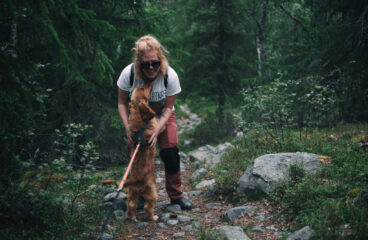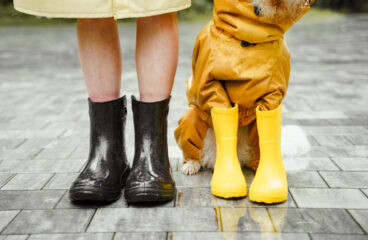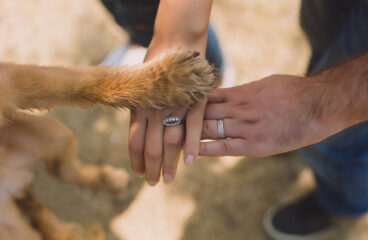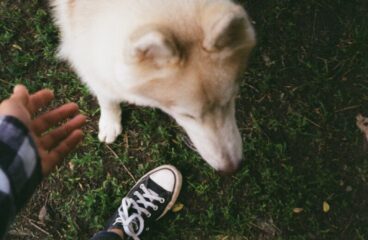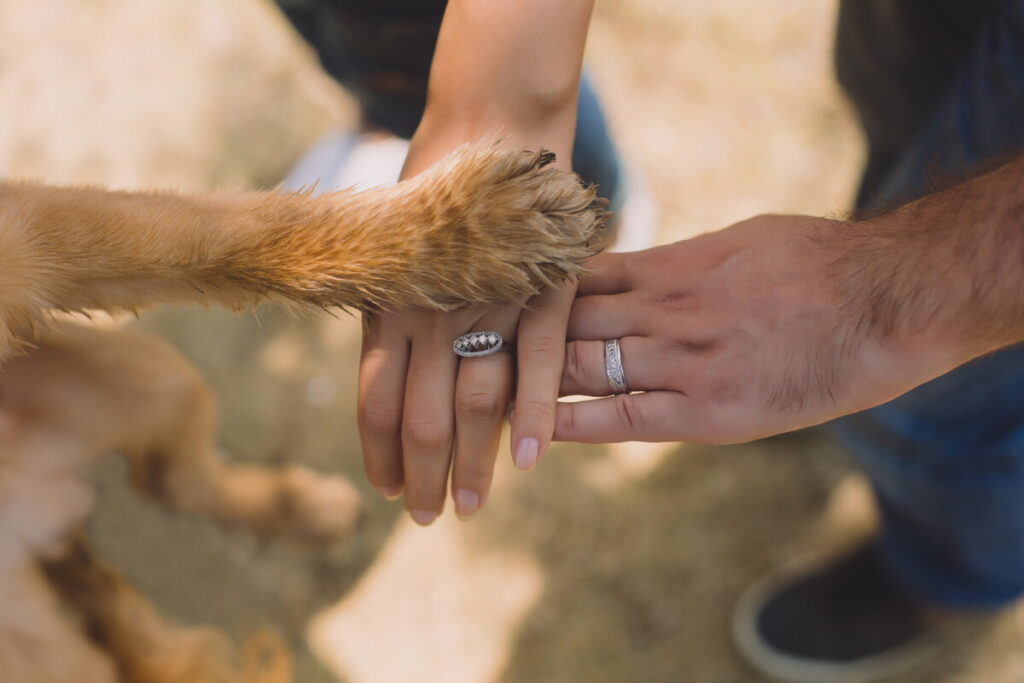
How To Bandage A Dog’s Foot Pad
Bandaging a dog’s foot pad can be a tricky task, but it is important to do it correctly to ensure that the wound heals properly. In this guide, we will provide step-by-step instructions on how to properly bandage a dog’s foot pad. We will also discuss the materials you will need, the importance of keeping the bandage clean, and how to tell if the bandage is too tight. With the right knowledge and supplies, you can help your pup heal quickly and safely.
Table of Contents
Step-by-Step Guide to Bandaging a Dog’s Foot Pad
Step 1: Gather Your Supplies
Before you start bandaging your dog’s foot pad, make sure you have all the supplies you need. You’ll need a non-stick gauze pad, a roll of self-adhesive bandage, scissors, and a pair of gloves.
Step 2: Prepare the Bandage
Cut a piece of self-adhesive bandage that’s long enough to wrap around your dog’s foot pad. Make sure it’s not too tight, but not too loose either.
Step 3: Place the Gauze Pad
Place the non-stick gauze pad over the injured area. Make sure it’s centered and that it covers the entire area.
Step 4: Wrap the Bandage
Start wrapping the bandage around your dog’s foot pad, starting at the toes and working your way up. Make sure the bandage is snug, but not too tight.
Step 5: Secure the Bandage
Once you’ve wrapped the bandage around your dog’s foot pad, secure it with a few pieces of tape. Make sure the tape is secure, but not too tight.
Step 6: Check for Comfort
Once you’ve finished bandaging your dog’s foot pad, check to make sure it’s comfortable. If it’s too tight or too loose, adjust it accordingly.
Step 7: Monitor Your Dog
Once you’ve finished bandaging your dog’s foot pad, monitor your dog for any signs of discomfort or irritation. If you notice any, remove the bandage and contact your veterinarian.
What Supplies Are Needed to Bandage a Dog’s Foot Pad?
If your pup has injured their foot pad, you’ll need to bandage it up to help it heal. Here’s what you’ll need:
- Gauze pads: These are used to cover the wound and absorb any drainage.
- Vet wrap: This is a stretchy, self-adhesive bandage that’s used to hold the gauze in place.
- Tape: This is used to secure the vet wrap.
- Scissors: You’ll need these to cut the gauze and vet wrap to the right size.
- Antiseptic: This is used to clean the wound before bandaging.
- Non-stick pads: These are used to cover the wound and absorb any drainage.
- Cotton balls: These are used to apply the antiseptic.
- Tweezers: These are used to remove any debris from the wound.
- A muzzle: This is used to keep your pup from licking or biting the bandage.
Once you have all the supplies, you can start bandaging your pup’s foot pad. Make sure to check the bandage regularly and change it as needed.
How to Choose the Right Bandage for a Dog’s Foot Pad
When it comes to caring for your pup’s paw pads, it’s important to choose the right bandage. Whether your pup has a cut, scrape, or other injury, the right bandage can help protect the wound and keep it clean. Here’s how to choose the right bandage for your pup’s foot pad.
First, assess the wound. Is it a deep cut or a shallow scrape? Is it bleeding or just irritated? Knowing the type of wound will help you choose the right bandage.
Next, consider the size of the wound. If it’s a large wound, you’ll need a larger bandage. If it’s a small wound, you’ll need a smaller bandage.
Third, think about the material of the bandage. You’ll want to choose a bandage that is breathable and won’t irritate your pup’s skin. Look for bandages made of cotton or other natural fibers.
Finally, make sure the bandage is secure. You don’t want it to slip off or come undone. Look for bandages with adhesive strips or other secure fastenings.
Choosing the right bandage for your pup’s foot pad can help protect the wound and keep it clean. With these tips, you can find the perfect bandage for your pup’s paw pad.
How to Properly Clean and Disinfect a Dog’s Foot Pad Before Bandaging
Cleaning and disinfecting your dog’s foot pad before bandaging is an important step in the healing process. Here’s how to do it right:
- Start by washing your hands with soap and water.
- Gently lift your dog’s paw and examine the foot pad. If there is any dirt or debris, use a damp cloth to wipe it away.
- Once the foot pad is clean, use a cotton ball or gauze pad to apply an antiseptic solution to the area. This will help to kill any bacteria or germs that may be present.
- Allow the antiseptic solution to dry completely before bandaging.
- Once the antiseptic solution is dry, apply a bandage to the foot pad. Make sure the bandage is snug but not too tight.
- Check the foot pad regularly to make sure the bandage is still secure and that the foot pad is healing properly.
Following these steps will help ensure that your dog’s foot pad is properly cleaned and disinfected before bandaging, which will help speed up the healing process.
How to Tell if a Dog’s Foot Pad Bandage Needs to Be Changed
If your pup has a bandage on their foot pad, it’s important to keep an eye on it and make sure it’s not in need of a change. Here are some signs that it’s time to switch out the bandage:
- The bandage is wet or damp. If the bandage is wet or damp, it’s likely that the wound is still draining and the bandage needs to be changed.
- The bandage is dirty or soiled. If the bandage is dirty or soiled, it’s likely that the wound is still draining and the bandage needs to be changed.
- The bandage is loose or slipping off. If the bandage is loose or slipping off, it’s likely that the wound is healing and the bandage needs to be changed.
- The bandage is causing your pup discomfort. If the bandage is causing your pup discomfort, it’s likely that the wound is healing and the bandage needs to be changed.
- The wound is not healing properly. If the wound is not healing properly, it’s likely that the bandage needs to be changed.
If you notice any of these signs, it’s important to change the bandage as soon as possible. If you’re unsure, it’s always best to consult your vet.
How to Prevent Infection When Bandaging a Dog’s Foot Pad
If your pup has injured their foot pad, it’s important to take the proper steps to ensure that the wound is properly treated and doesn’t become infected. Here’s how to bandage your pup’s foot pad to prevent infection:
- Clean the wound. Before you start bandaging, it’s important to make sure the wound is clean. Gently wash the area with warm water and a mild soap. If the wound is deep, you may need to use a saline solution to flush out any debris.
- Apply an antiseptic. Once the wound is clean, apply an antiseptic to the area. This will help to prevent infection and speed up the healing process.
- Apply a bandage. Once the wound is clean and dry, you can apply a bandage. Make sure the bandage is not too tight, as this can cause further irritation.
- Change the bandage regularly. It’s important to change the bandage regularly to ensure that the wound stays clean and free of infection. Change the bandage at least once a day, or more often if the wound is particularly dirty or wet.
- Monitor the wound. Keep an eye on the wound to make sure it’s healing properly. If you notice any signs of infection, such as redness, swelling, or discharge, contact your vet immediately.
By following these steps, you can help to ensure that your pup’s foot pad stays healthy and infection-free.
What to Do if a Dog’s Foot Pad Bandage Becomes Too Tight or Loose
If your dog’s foot pad bandage becomes too tight or loose, it’s important to take action right away. Here’s what to do:
If the Bandage is Too Tight:
- Check the bandage for any signs of irritation or discomfort. If your dog is showing signs of pain or discomfort, remove the bandage immediately.
- If the bandage is not causing any discomfort, loosen it slightly by gently pulling on the edges.
- If the bandage is still too tight, you may need to cut it off. Use scissors to carefully cut the bandage away from the foot pad.
- Once the bandage is removed, check the foot pad for any signs of irritation or injury. If the foot pad is red or swollen, contact your veterinarian for further advice.
If the Bandage is Too Loose:
- Check the bandage for any signs of slipping or coming undone. If the bandage is slipping, you may need to replace it.
- If the bandage is still secure, you can try to tighten it by gently pulling on the edges.
- If the bandage is still too loose, you may need to replace it with a new one. Make sure to use a bandage that is the correct size and shape for your dog’s foot pad.
- Once the new bandage is in place, check it regularly to make sure it is not too tight or too loose.
No matter what, it’s important to keep an eye on your dog’s foot pad bandage and make sure it is not too tight or too loose. If you have any concerns, contact your veterinarian for further advice.
Conclusion
In conclusion, bandaging a dog’s foot pad is a relatively simple process that can be done at home. It is important to ensure that the bandage is not too tight, and that the dog is comfortable with the bandage. It is also important to check the bandage regularly to make sure it is not too tight or too loose. If the bandage becomes too tight or too loose, it should be adjusted or replaced. With proper care and attention, a bandaged foot pad can help a dog heal quickly and comfortably.
